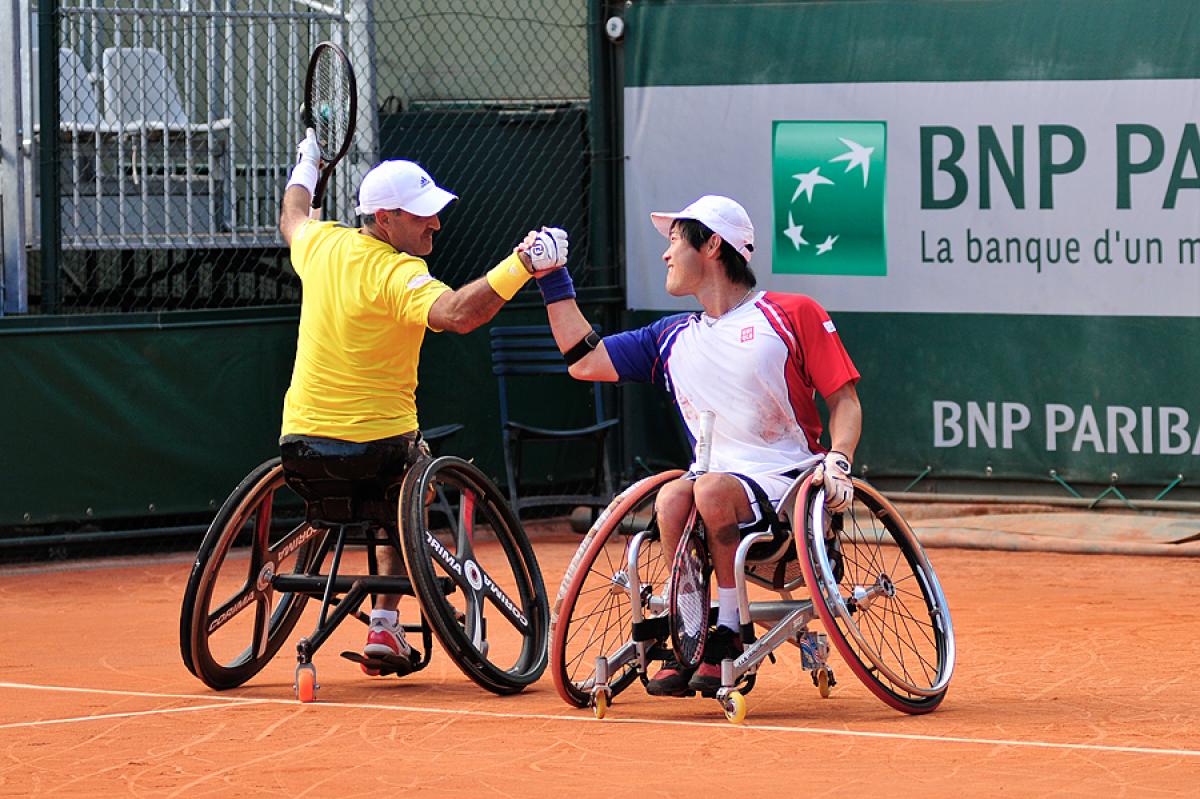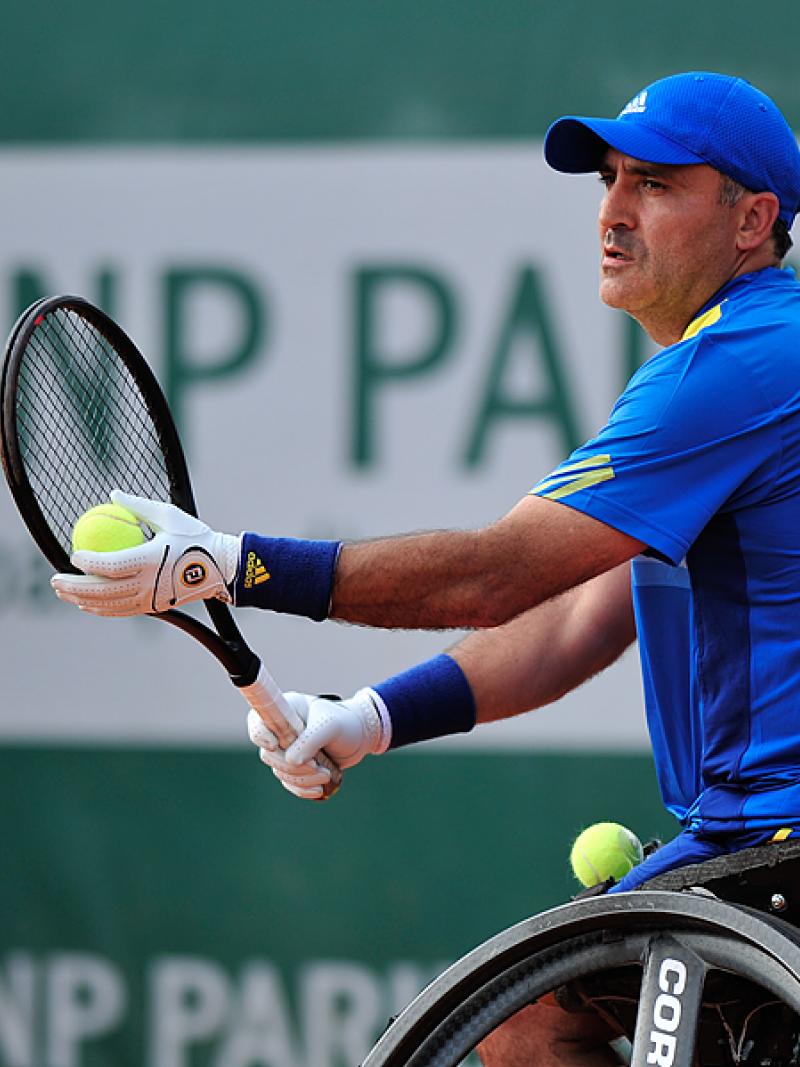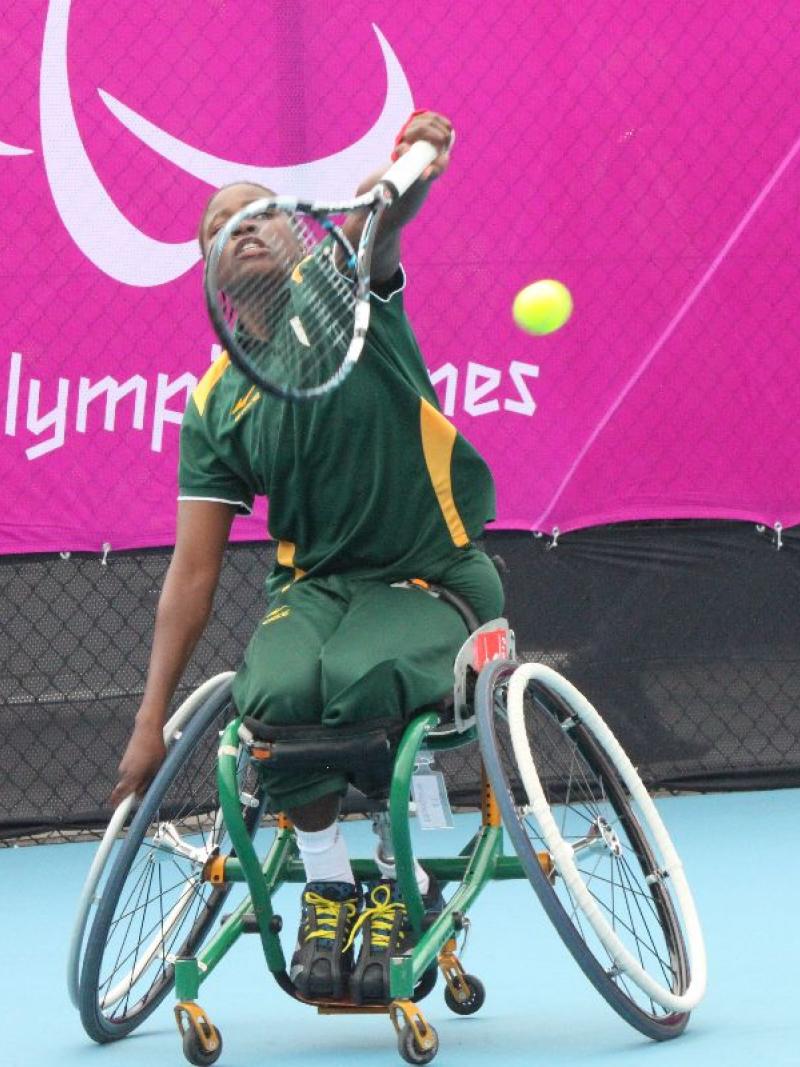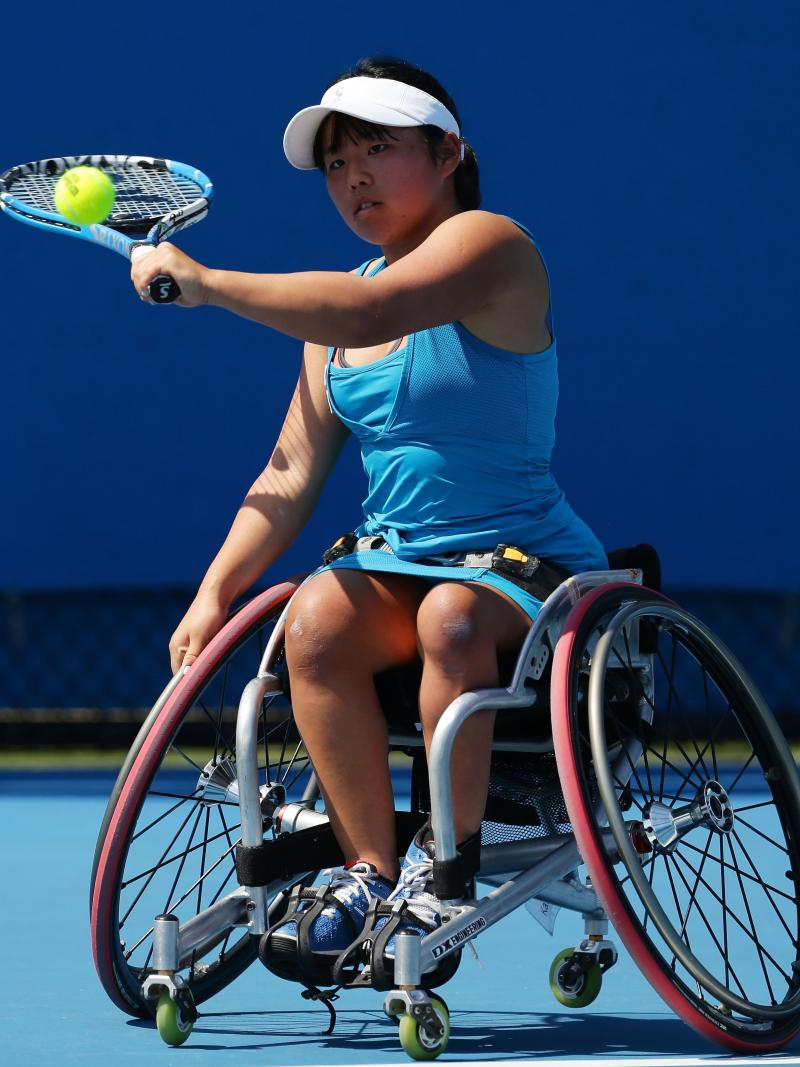Wheelchair tennis celebrates five years of Grand Slams
Entering this week’s Roland Garros, wheelchair tennis players mark five years of Grand Slam events forming part of the top tier of the the sport. 05 Jun 2014
Stephane Houdet and Shingo Kunieda
“It is a wonderful experience for the players and it really showcases our sport. You won’t get the attention at our normal tournaments like you do at the slams.”
When Roland Garros takes place from 6-8 June, it will mark five years since Grand Slams became the top tier of the wheelchair tennis tour.
France’s Stephane Houdet hopes to win his third consecutive men’s Roland Garros singles title this week, whilst Germany’s Sabine Ellerbrock is aiming to defend her maiden Grand Slam victory in the women’s singles.
For the past half of a decade, wheelchair tennis players such as Houdet and Ellerbrock have competed in the same tournaments as able-bodied tennis stars, playing the same Grand Slams with the same importance.
Because of this, in the past five years, the sport has gained far more recognition from the outside world than it could have ever imagined.
“There are so many ripple on effects that benefit wheelchair tennis being in the Slams,” said Australian David Hall, who is one of the greatest wheelchair tennis players of all-time with a career singles record of 632-111.
“Every time a player is interviewed, every time a match is played, every time match footage is shown on the TV, wheelchair tennis is being broadcast to a lot of people.
“(People will think) here is a wheelchair sport being played on the grandest stages in world sport, these players must be good.”
As wheelchair tennis’ profile has risen, the players have become far more recognised amongst fellow athletes, fans, and also the media.
“I can now have a chat with top players from able-bodied tennis in the dressing room,” said Japan’s Shingo Kunieda, currently No. 1 in the world in men’s singles.
“Now, I think most players can recognise me.”
When you play at the top level of your sport you are expected to perform, and that is exactly what Kunieda did when he first began playing at the Grand Slams.
With that attitude, the Japanese star won the first Grand Slam in wheelchair tennis at the Australian Open in 2009.
Since then, he has gone on to win the Australian Open singles title another four times, whilst also dominating the other three Grand Slams.
The exposure wheelchair tennis now gets is something Brad Parks, the founder of the sport, could never have imagined.
Parks founded the sport in 1976 after recovering from a severe skiing accident, which left him paralysed from the waist down. He only started the sport as part of his rehabilitation. Never did he think the sport could become this big.
“Today you have the Slams and they are great,” said Parks. “It is a wonderful experience for the players and it really showcases our sport. You won’t get the attention at our normal tournaments like you do at the slams.”
Changes to the Grand Slam events started in the early 2000’s.
The Australian Open, Wimbledon, and the US Open were the first three Grand Slams to host a competitive wheelchair tennis event alongside the able-bodied Grand Slam tournament.
Roland Garros became the final Grand Slam to join in 2007, when it integrated a competitive tournament into the tour’s calendar.
Then in 2009, the four Grand Slam events were awarded the most world ranking points, as the tour was restructured, making them the top tier of the wheelchair tennis tour.
The Australian Open replaced their Wheelchair Tennis Classic 8’s tournament with the first major of the tour, whilst Wimbledon, the US Open, and Roland Garros enhanced their Masters Series status to become the top level of wheelchair tennis competition.

 Facebook
Facebook
 Instagram
Instagram
 Twitter
Twitter
 Youtube
Youtube
 TikTok
TikTok
 Newsletter Subscribe
Newsletter Subscribe



